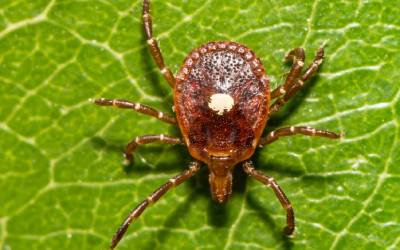Sure, other parts of the country have slightly higher hot temperatures and colder lows, but few other places match the combination of heat and cold and humidity and tornadoes that we contend with here in Missouri. Extreme weather is nothing new here, but while many of the effects of major weather events are immediately obvious, some are not, and when it comes to pests, very small changes can have an outsized effect, especially over long periods of time. In this blog, let’s examine some ways more extreme weather might affect pests and pest control in the Show Me State.
Invasive Insects on the Move
Sometimes, an extreme weather event displaces an entire insect colony and forces them to migrate to a new location to rebuild. Sometimes, we’ll get calls for new pest problems one to two weeks after major storms – this is why.
This is part of the immediate effect major weather events can have on pest populations. The more alarming effect, however, is the cumulative effect of extreme weather. For example, shifting weather patterns and higher average temperatures have made the midwestern U.S. a more inviting region for certain pests. We’ve already seen it happen with two pest species that are now widespread here.
Asian Tiger Mosquitoes seem like they’ve been around forever, but actually, they haven’t. They’re an invasive species that first came to this area in the late 1980s or 90s. Now, that’s not to say we wouldn’t have mosquitos here if they never arrived – there are mosquito species indigenous to this area, but Asian tiger mosquitoes have been able to outcompete them since their arrival and become the dominant species.
Ticks are another example. Deer ticks used to be found primarily on the east coast of the United States. Over the last several decades, they’ve expanded their territory into the midwest U.S. and southern Canada. The Lone Star tick is another that has gradually expanded its territory into the midwest U.S.
Missourians shouldn’t panic, but they should be aware of the situation, as both of these invasive ticks have the potential to spread disease.
Don’t Let Kissing Bugs Pucker Up with You
Kissing bugs are a relatively common species in tropical central and south America. There are over 130 species, each of which can carry the T. cruzi parasite that causes Chagas’ disease. Over the last two decades, kissing bugs have been expanding their territory northward as the environment becomes more habitable for them. As of today, kissing bugs have been spotted in 32 states including Missouri.
Kissing bugs are worth knowing about because of their potential to spread Chagas’ disease, a life-threatening disease that affects the heart, brain, and digestive system. Kissing bugs transmit the parasite during the process of feeding on your blood at night. They especially like to bite peoples’ faces, which is how they came to be called kissing bugs.
We wish kissing bugs were merely a figment of Stephen King’s imagination, but they’re very much real. But don’t panic, though. Even though they have been found in Missouri, they’re still extremely rare.
What Can You Do to Prepare?
Hotter temperatures. Colder temperatures. More storms. More droughts. They’re having an impact on us, and they’re having an impact on insects around the world too. So we might as well prepare for what comes next.
Here are a few ways you can prepare for extreme weather affecting pest activity:
- Awareness: Understanding what can happen is the key to preparedness. Keep your eyes open for new pest arrivals after a major storm. Keep track of the news (or bookmark this blog) to stay current on possible new invasive pest threats.
- Don’t Worry: It’s extremely likely that pest activity will increase in the future and we’ll see more invasive species arrive. Whatever happens, don’t worry too much about it, a professional pest control technician can take care of any situation. We have pest control down to a science.
- Ensure Structural Integrity: If there are any cracks in your external walls, have them sealed. This is one of the best ways to prevent pests from coming inside.
- Exterior Grounds Maintenance: keep your yard trim and tidy. Pests love hiding in areas like wood piles and overgrown shrubbery. Without those inviting spaces in your yard, they’re likely to continue on to the next.
- Year-Round Monitoring: Inspect your grounds quarterly. If you do notice the early signs of a new pest problem, get it taken care of early.
Experienced Pest Control in St. Louis
Infestations can be stressful to deal with any time, but they are particularly difficult to handle on top of a serious storm. If you want help protecting your property from pests no matter the weather, turn to Blue Chip Pest Services! We’ve served the St. Louis area since 1971, our highly trained technicians know how to handle any pests that you may be dealing with. Get your free quote today!


